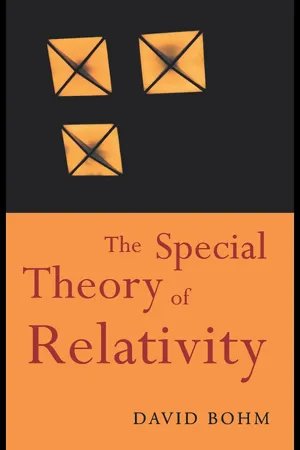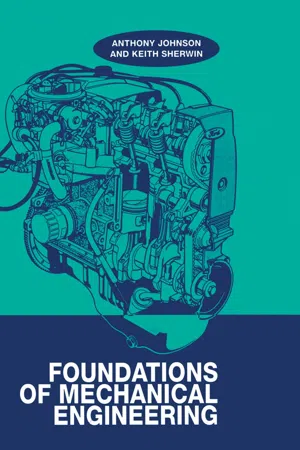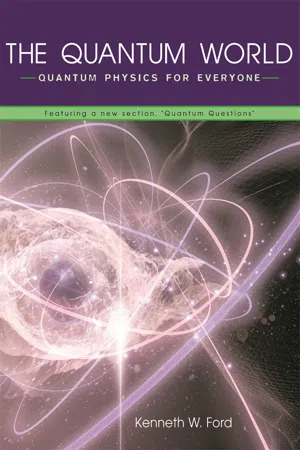Physics
Collisions and Momentum Conservation
In physics, collisions involve the interaction between two or more objects, resulting in a change in their velocities. Momentum conservation states that in the absence of external forces, the total momentum of a system remains constant before and after a collision. This principle is a fundamental concept in understanding the behavior of objects during collisions.
Written by Perlego with AI-assistance
5 Key excerpts on "Collisions and Momentum Conservation"
Learn about this page
Index pages curate the most relevant extracts from our library of academic textbooks. They’ve been created using an in-house natural language model (NLM), each adding context and meaning to key research topics.
- eBook - ePub
Automotive Accident Reconstruction
Practices and Principles, Second Edition
- Donald E. Struble, John D. Struble(Authors)
- 2020(Publication Date)
- CRC Press(Publisher)
Chapter 23 .Momentum Conservation for Two-Degree-of-Freedom Coplanar Collisions
Now we consider a somewhat more general case, in which two bodies experience momentum conservation while colliding in a plane. Rotational effects are not considered, which means that the impact is central (contact forces pass through the centers of mass), or that rotational motions are not significant, or that rotational inertia is insignificant (i.e., the bodies are particles). Each body thus has two degrees of freedom, instead of one in uniaxial collisions, or three if rotational effects were being considered. Since the two bodies are taken together as a system, contact forces do not enter the picture. If forces external to the system are negligible, momentum is conserved during the crash phase. This can be expressed mathematically as(19.26)L X=L X ′or(19.27)L Y=L Y ′,(19.28)m 1V+X 1m 2V=X 2m 1V+X 1′m 2VX 2′(19.29)m 1V+Y 1m 2V=Y 2m 1V+Y 1′m 2V.Y 2′Again, the primed velocities may be considered as known, being determined during the analysis of the run-out phase. The velocities without primes are the unknowns. We see that we have four unknowns, with only two equations available from momentum conservation considerations. Again, there is a gap to be filled.Instead of generating additional equations by introducing constants such as the coefficient of restitution, we keep the number of equations at two and reduce the number of unknowns. This is done by assuming that the directions of the impact velocity vectors are known, perhaps through scene evidence or other knowledge of the accident sequence. The magnitudes of the impact velocity vectors are V 1 and V 2 , which are now the unknowns. The directions of the impact vectors, or approach angles, are θ 1 and θ 2 - eBook - ePub
- David Bohm(Author)
- 2015(Publication Date)
- Routledge(Publisher)
ith particle in the “primed” system of coordinateswhere mi is the mass of the ith particle in the “unprimed” system of coordinates and pi is its momentum. If the total mass ςimiand the total momentum ςipiare conserved in the unprimed system, then (since V′ is a constant), it follows that the total mass is conserved in the “primed” system. And from Eq. (18–14 ) it follows that the total momentum P′ = M′V′ is also conserved in the latter system.To see in more detail what the relativistic conservation laws mean, let us consider, as an example, the collision of two particles. Let m1A, m2A, v1A, v2Arefer to the masses and velocities of the two particles before collision, m1B, m2B, v1B, v2Bafter collision. If the particles are so slow that nonrelativistic theory can be applied, we know thatNow, if this collision is viewed from another frame in which the general system velocity of the two atoms is high, the results of this chapter show that the conservation law (18–34 ) for the total momentum will still hold in the new frame, provided that Eqs. (18–30 ) and (18–31 ) are adopted for the mass and momentum of the particles in the new system. However, instead of (18–35 - eBook - ePub
- David Bohm(Author)
- 2003(Publication Date)
- Routledge(Publisher)
V! is also conserved in the latter system.To see in more detail what the relativistic conservation laws mean, let us consider, as an example, the collision of two particles. Let mA , m1 A, v2 A, v1 A refer to the masses and 2 velocities of the two particles before collision, m1 B , m2 B , v2 B , v1 B after collision. If the 2 particles are so slow that nonrelativistic theory can be applied, we know that(18–34)(conservation of total momentum)(18–35)(constancy of mass of each particle)Now, if this collision is viewed from another frame in which the general system velocity of the two atoms is high, the results of this chapter show that the conservation law (18–34) for the total momentum will still hold in the new frame, provided that Eqs. (18–30) and (18–31) are adopted for the mass and momentum of the particles in the new system. However, instead of (18–35), which expresses the constancy of mass of each particle, we shall have(18–36)which implies that only the total mass of the system is conserved, while that of its separate particles will in general change [as it must, according to (18–30), because this mass depends on the velocity of the particle, which does in fact alter in a collision].Thus far we have derived our results under the assumption that all movement is in one direction, that of z. When the problem is considered in three dimensions, however, essentially the same properties are obtained, as can easily be shown by a more detailed calculation that we shall not give here. The mass is still given by an equation similar to (18–30), except that we must regard v as the absolute value of the velocity vector of the particle, (vx , vy , vz ), so that v2 =vx 2 +vy 2 +vz 2 .Of course, there are now three components of the momentum. In vector notation we have - eBook - ePub
- A. D. Johnson(Author)
- 2017(Publication Date)
- CRC Press(Publisher)
If the coloured ball is already moving when the impact occurs, the momentum which it already possessed will be increased. Indeed the white ball may not transfer all its momentum and will continue rolling at a slower pace. The loss of momentum of the white ball is equal to the gain in momentum of the coloured ball and is transferred due to the mechanism of the impact. Since no mass is lost or gained by the momentum transfer, the change in momentum must be directly proportional to the change in velocity.Equation (3.10) can be modified to account for the changes in momentum experienced by a mass, such as the white ball or the coloured ball, no matter what the state of its motion:impulse= change in momentumF t= mv 2− mv 1 ( 3.11 )3.4.1 Conservation of momentum
Consider the interstellar spacecraft mentioned earlier. Its momentum carries it through space at a constant velocity and unless acted upon by an external force, such as rocket motors, it will continue at that velocity. If the rocket motors were used to slow the spacecraft, then some or all of the momentum would be destroyed by the external force.From this it can be deduced that ‘momentum can only be destroyed by a force or created by the action of a force’. If no external force is exerted on the body, then the momentum remains constant.Another way of describing the conservation of momentum is: ‘the total momentum of a system before impact is equal to the total momentum after impact’. The impulsive force at impact destroys all or some of the momentum of one body and imparts it to the second body. The total value of the momentum always remains constant. It is merely shared between the masses involved. A white ball and a coloured snooker ball, both travelling across a table, possess individual values of momentum. After their impact the individual velocities will have changed, imparting different values of momentum to each ball; however, the total momentum will have remained the same in any direction. - eBook - ePub
The Quantum World
Quantum Physics for Everyone
- Kenneth W. Ford(Author)
- 2005(Publication Date)
- Harvard University Press(Publisher)
This is no surprise, for everything in the large-scale world is built ultimately of subatomic units. So you can think of the causal link going from small to large: energy, momentum, angular momentum, and charge are conserved in the large-scale world because they are conserved in the subatomic world. The conservation laws that govern these quantities are regarded as absolute. An absolute conservation law is one for which no confirmed violation has ever been seen and which is believed to be valid under all circumstances. Moreover, we have theoretical reason to believe that these four laws are absolute. Relativity and quantum theory join to predict that these laws should be valid. But experiment is the final arbiter. No amount of beautiful theory trumps experiment. Calling these conservation laws absolute must be as tentative as every other firm pronouncement about nature. Energy In Chapter 6, I introduced the “downhill rule” for quantum jumps. A spontaneous transition must be from a higher to a lower-energy state. A particle can decay only into particles whose total mass is less than the mass of the decaying particle. And, as described earlier in this chapter, energy conservation also plays an essential role in “uphill” events such as the creation of new particles in a proton-proton collision. There is such abundant evidence that the energy after a reaction is the same as the energy before that the law of energy conservation becomes a practical tool for analyzing the complex debris created in particle collision. Momentum Momentum conservation is so well established that it, like energy conservation, becomes a tool of analysis in particle processes. With the help of these laws, physicists can work backward to deduce the masses of new particles that are created. One of the prohibitions resulting from the joint workings of energy conservation and momentum conservation is the prevention of one-particle decays




